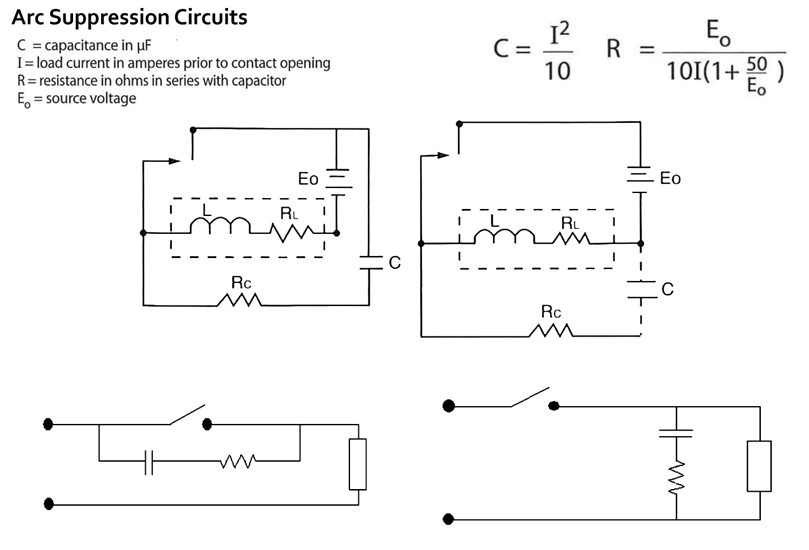Spark Suppression circuits are designed to reduce arcing and noise generation produced in switches and relays.
When a switch or relay is opened, an arc can develop across the contacts, which over time can erode the contacts. To prevent this phenomena, an RC network is placed across the contacts.
How arc suppression works
1. When the contacts in an arc suppression circuit open, the applied voltage is placed across the capacitor and not the contacts.
2. The capacitor charges at a rate faster than the contacts open which prevents an arc from forming across the contacts.
3. When the contacts close, the inrush current from the charged capacitor and source can be substantially higher than the contacts can safely conduct, causing the contacts to deteriorate. This is why it is important to have a resistor in series with the capacitor.
4. The resistor acts as a current limiter which reduces the inrush current by a significant amount. The arc produced at the contact closure is greatly reduced, thus extending the service life of the contacts.
Calculating arc suppression circuits
The values of required capacitance and resistance of an arc suppression circuit can be approximated from the following formulas developed by C.C. Bates in his paper titled “Contact Protection of Electromagnetic Relays.” (Electro-mechanical Design, August, 1966.):
C = I2 / 10
Rc = Eo /[10I(1+(50/Eo))]



